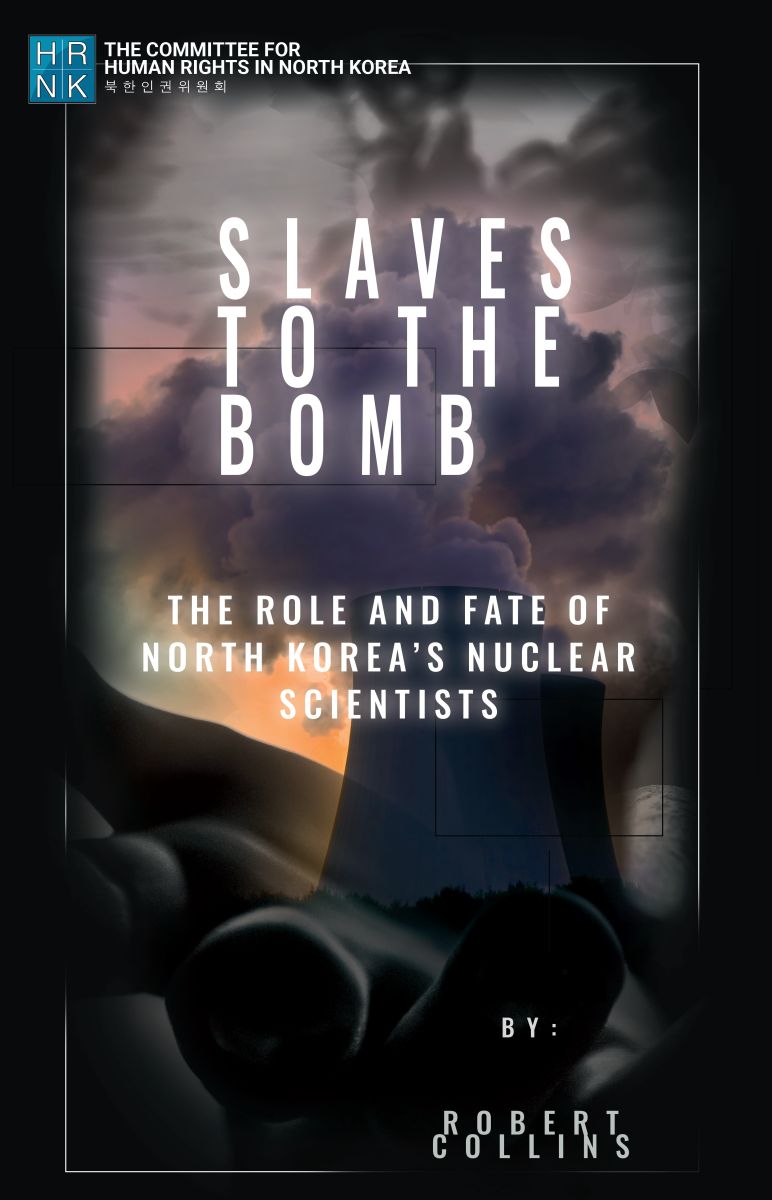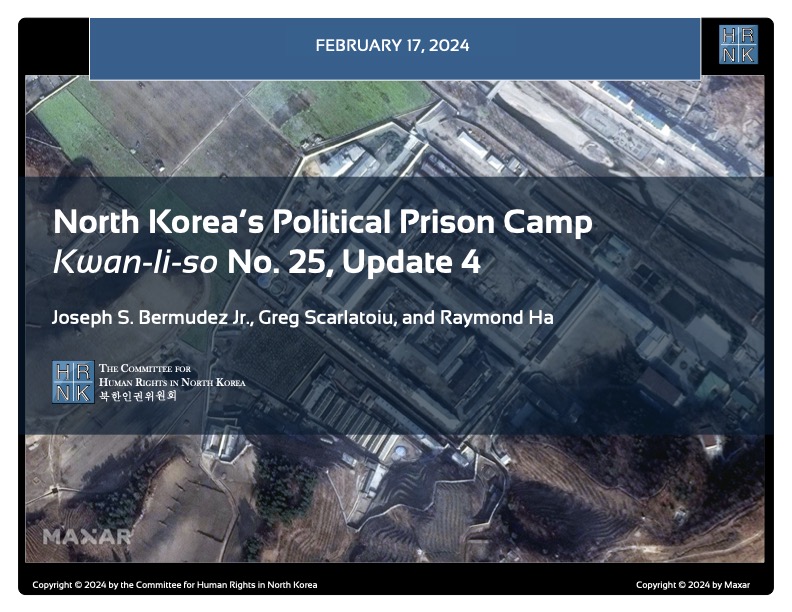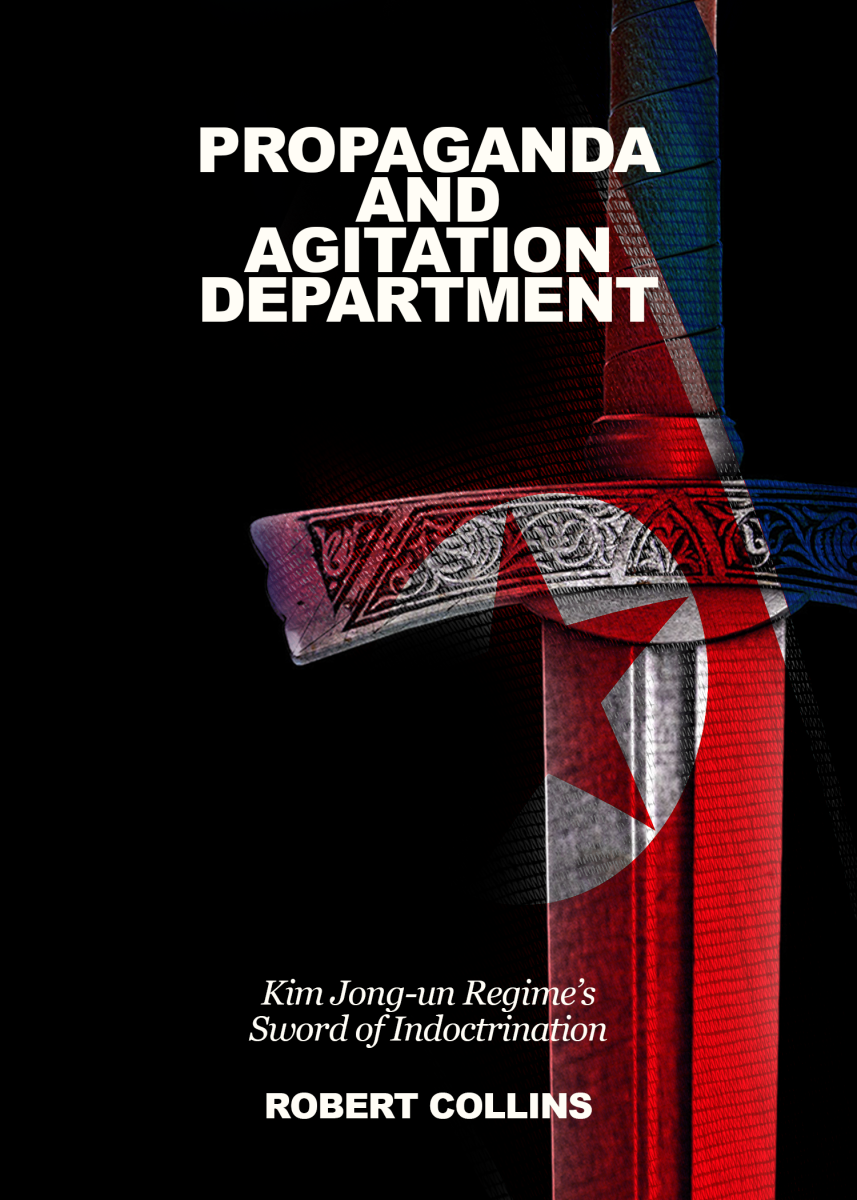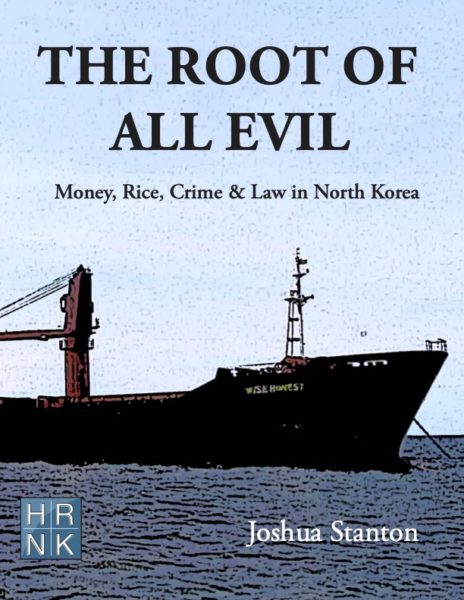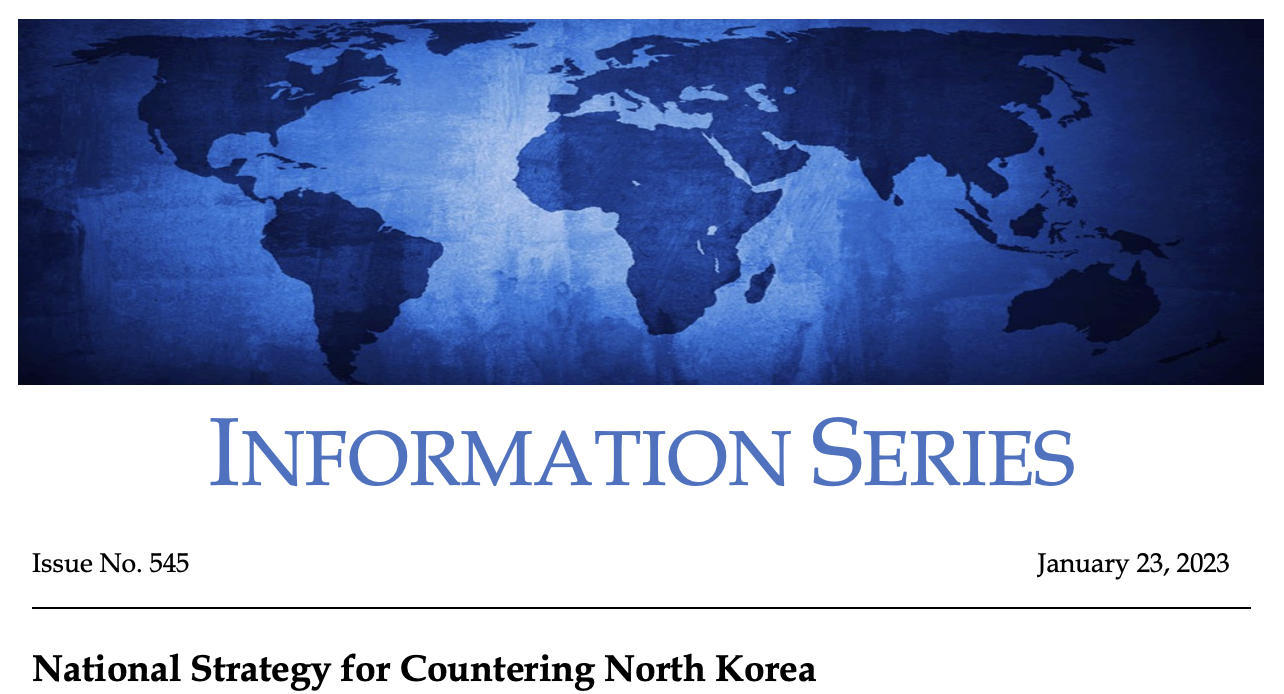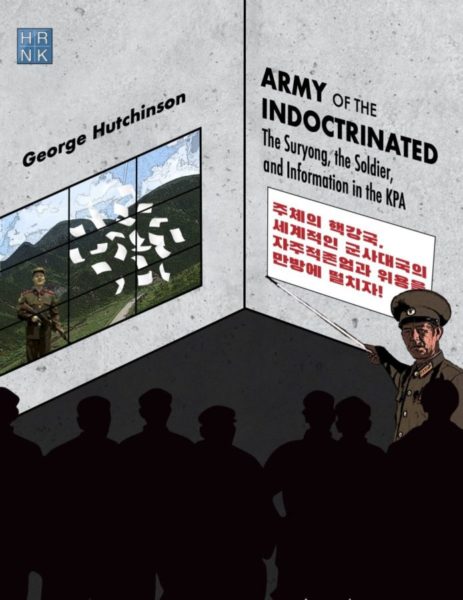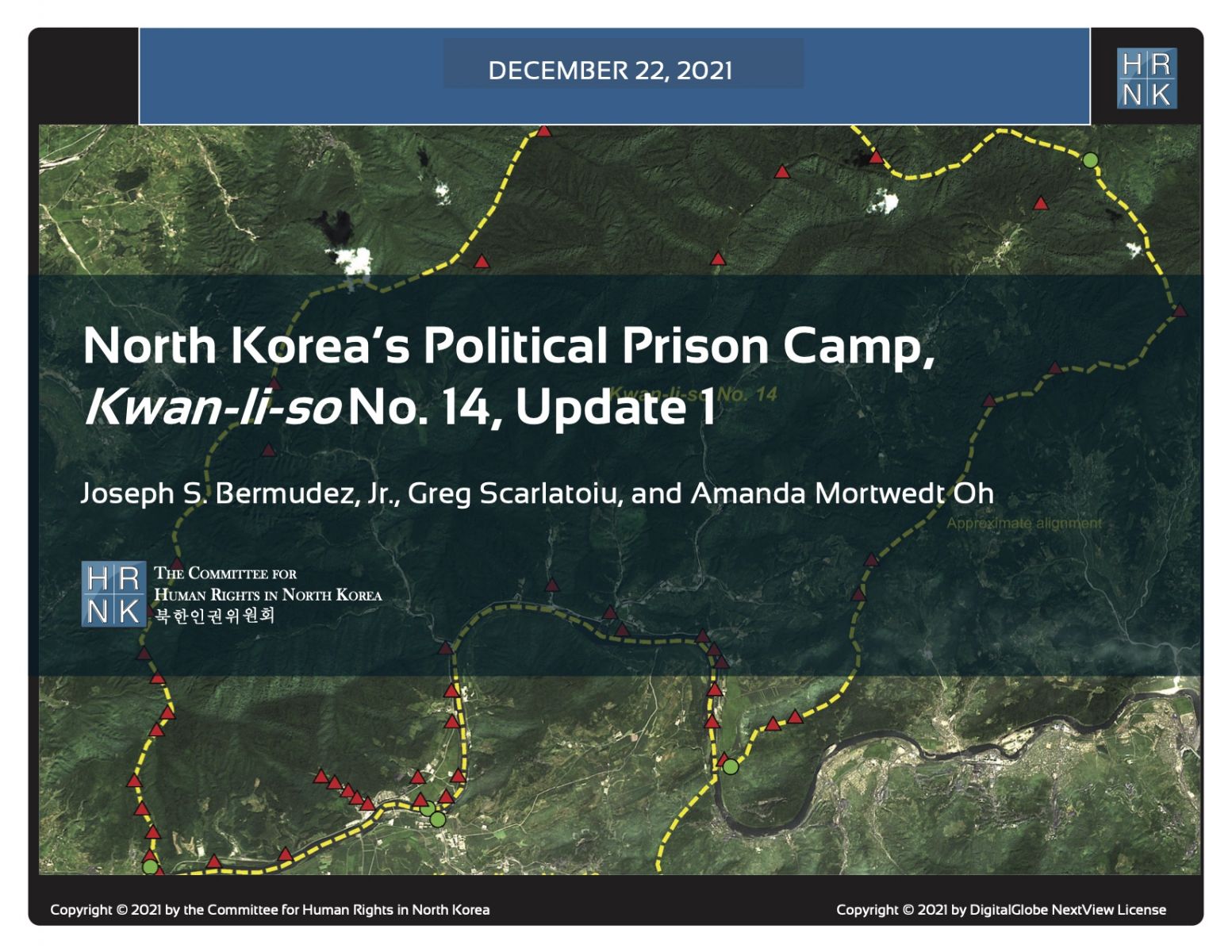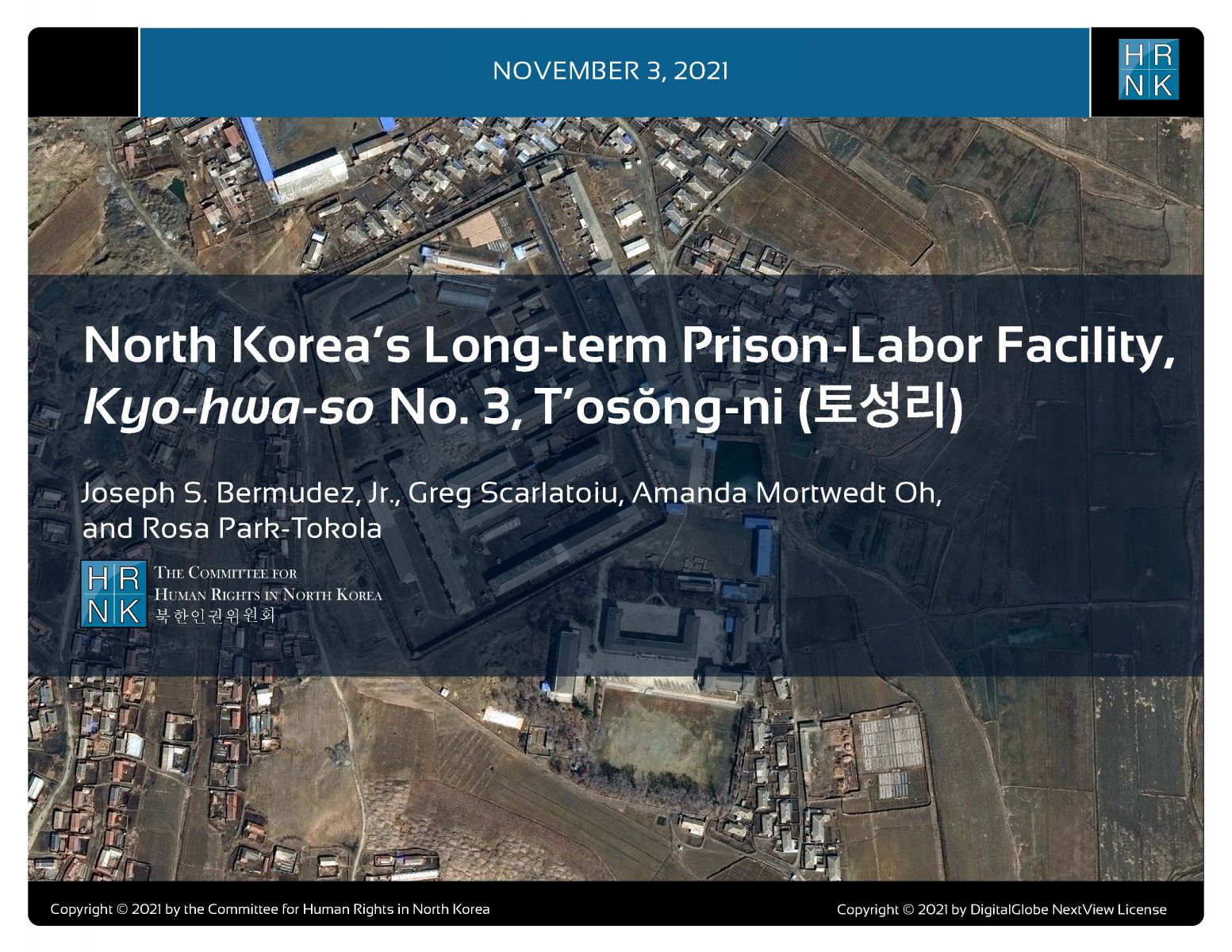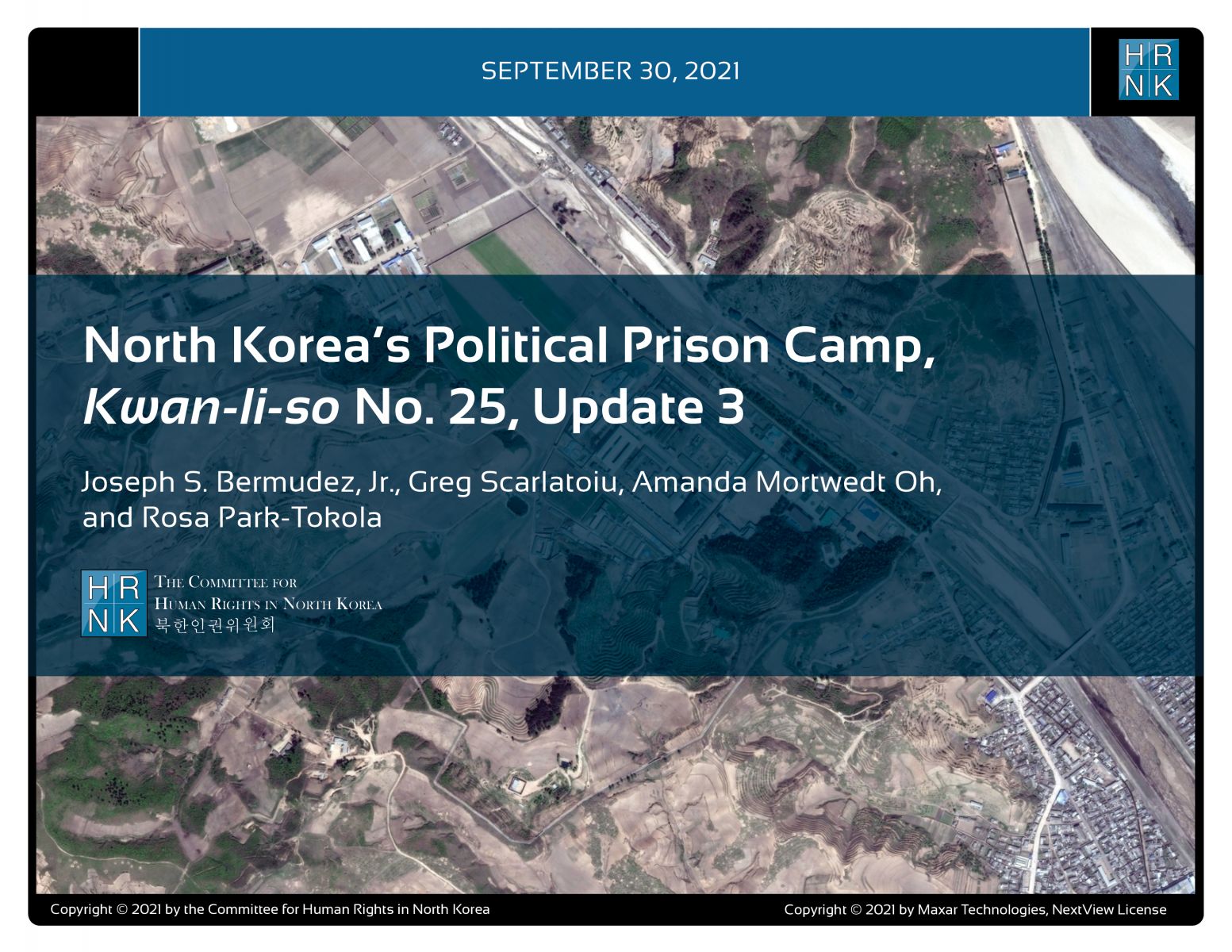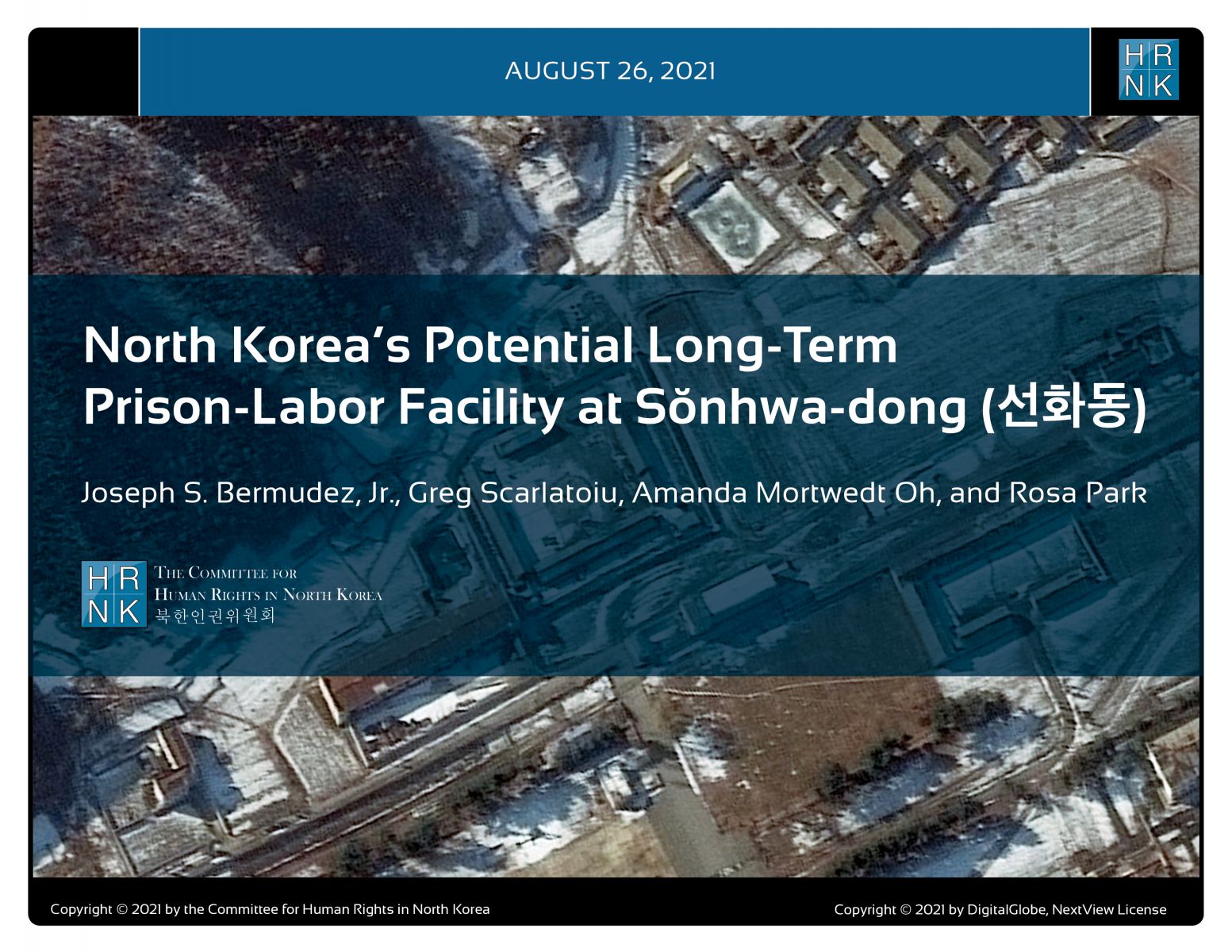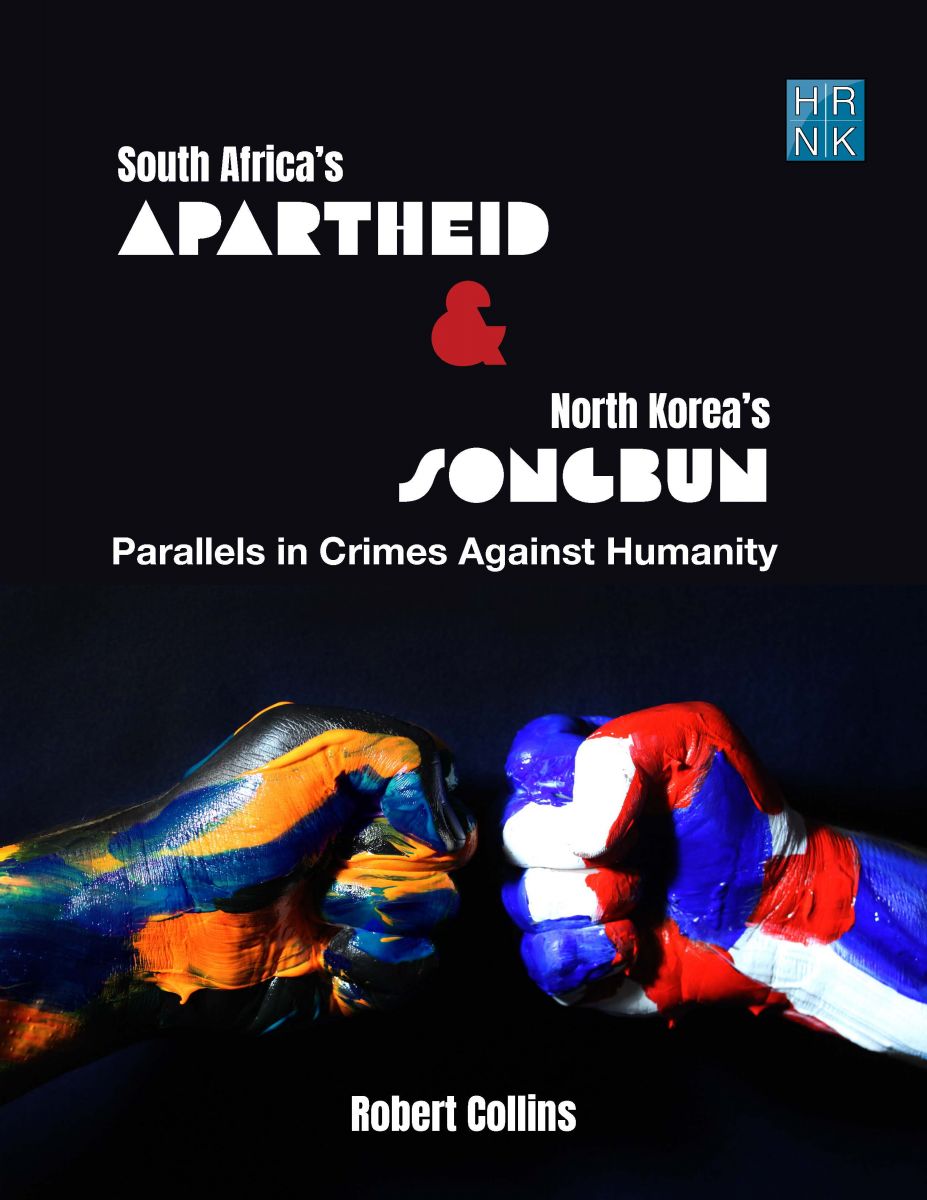PRESS RELEASE
Tuesday, November 29, 2016
HRNK and AllSource Analysis Launch New Satellite Imagery Report on North Korea’s Political Prison Camp No. 25
The Committee for Human Rights in North Korea (HRNK), a non-governmental organization based in Washington, D.C., in collaboration with AllSource Analysis (AllSource), a leading global provider of high-resolution earth imagery solutions, have launched a report entitled North Korea’s Camp No. 25 - Update 2. This is the third HRNK satellite imagery report on Camp No. 25, updating the findings of assessments of the same detention facility published in February 2013 and June 2014. Political Prison Camp No. 25 (a.k.a. Kwan-li-so No. 25) is located in Susong-dong, Chongjin-si, North Hamgyong Province, on the northeast coast of North Korea. Compared to other political prison camps, which occupy larger areas, Camp No. 25 is tightly confined and more similar to a penitentiary. While open-source information on the camp continues to be scarce, the Camp No. 25 political prisoner population is estimated to be at around 5,000.
The report is the latest step in a collaborative endeavor by HRNK and AllSource to create a clear picture of the evolution and current state of North Korea’s political prison camps. For this report, AllSource analyzed pan-sharpened multispectral satellite imagery of Camp No. 25 and its immediate environs collected by DigitalGlobe from January 18, 2003 through September 21, 2015, and USGS declassified KH-4B from May 28, 1970 and KH-9 from January 1, 1976.
Camp No. 25 is run by the Seventh (Prisons) Bureau of the State Security Department (SSD), which is de facto controlled by the Organization and Guidance Department (OGD). As confirmed by previous reports, the camp went through an expansion, in particular between 2009 and 2010, when its size increased by 72 percent, from 565,424 square meters to 972,270 square meters. All but one of the 41 guard positions identified by HRNK and AllSource in the June 2014 report are still standing and well maintained. The guard posts are positioned to provide overlapping fields-of-view of the camp. The report also identifies a small 14 meter by 9 meter (15 yard by 9 yard) single-story building inside a small 25 meter by 25 meter (27 yard by 27 yard) walled compound overlooked by seven guard positions. The size and construction of that compound within the larger camp are not consistent with North Korean practices for the storage of heavy equipment or munitions. The smaller compound may perform functions including that of detention facility for high value prisoners.
Joseph S. Bermudez Jr., internationally recognized analyst and award-winning author, said: “The recent HRNK/AllSource report on Camp No. 25 confirms that primary economic activities likely carried out with prison labor are centered on agriculture and light industry.” HRNK Executive Director Greg Scarlatoiu commented: “It continues to be difficult to quantify the precise economic importance of the slave labor provided by North Korea’s political prison camps. That said, our satellite imagery analysis of Camp No. 25 and other such unlawful detention facilities appears to confirm the sustained, if not increased importance of the use of forced labor under Kim Jong-un.”
Scarlatoiu further added: “Due to an intensified crackdown on attempted defections, the imprisonment of forcibly repatriated refugees, the purging of senior officials, together with associates and family members, and the possible transfer of prisoners from camps in the border areas that are now closed, Camp No. 25 underwent a twofold expansion in 2009-2010. Recent satellite imagery analysis indicates that Camp No. 25 continues to be fully operational at the expanded scale.”
HRNK, established in 2001 by a distinguished group of foreign policy and human rights specialists, seeks to draw attention to human rights conditions in North Korea by publishing well-documented reports and papers, convening conferences, testifying at national and international fora, and seeking creative ways to end the isolation and oppression of the North Korean people.
The report North Korea’s Camp No. 25 – Update 2 is available on HRNK’s website:
http://www.hrnk.org/uploads/pdfs/ASA_HRNK_Camp25_Update2.pdf
Contact: Greg Scarlatoiu, [email protected]; 202-499-7973
This is the first satellite imagery report by HRNK on a long-term political prison commonly identified by researchers and former detainees as Kwan-li-so No. 18 (Pukch'ang). This report was concurrently published on Tearline at https://www.tearline.mil/public_page/prison-camp-18.
To understand the challenges faced by the personnel who are involved in North Korea’s nuclear program, it is crucial to understand the recruitment, education, and training processes through the lens of human rights. This report offers a starting point toward that understanding. North Korea’s scientists and engineers are forced to work on the nuclear weapons program regardless of their own interests, preferences, or aspirations. These individuals may be described as “moder
In this submission, HRNK focuses its attention on the following issues in the DPRK: The status of the system of detention facilities, where a multitude of human rights violations are ongoing. The post-COVID human security and human rights status of North Korean women, with particular attention to sexual and gender-based violence (SGBV). The issue of Japanese abductees and South Korean prisoners of war (POWs), abductees, and unjust detainees.
This report provides an abbreviated update to our previous reports on a long-term political prison commonly identified by former prisoners and researchers as Kwan-li-so No. 25 by providing details of activity observed during 2021–2023. This report was originally published on Tearline at https://www.tearline.mil/public_page/prison-camp-25.
This report explains how the Kim regime organizes and implements its policy of human rights denial using the Propaganda and Agitation Department (PAD) to preserve and strengthen its monolithic system of control. The report also provides detailed background on the history of the PAD, as well as a human terrain map that details present and past PAD leadership.
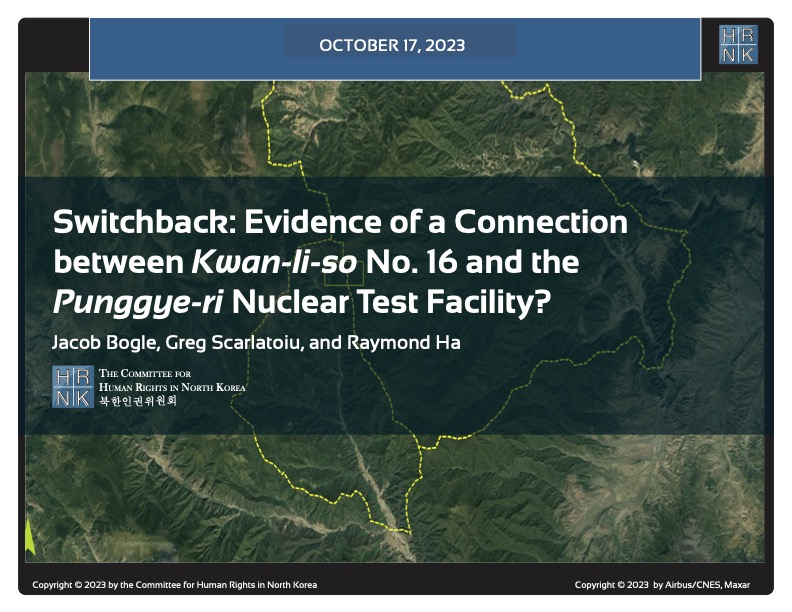
HRNK's latest satellite imagery report analyzes a 5.2 km-long switchback road, visible in commercial satellite imagery, that runs from Testing Tunnel No. 1 at North Korea's Punggye-ri nuclear test facility to the perimeter of Kwan-li-so (political prison camp) no. 16.
This report proposes a long-term, multilateral legal strategy, using existing United Nations resolutions and conventions, and U.S. statutes that are either codified or proposed in appended model legislation, to find, freeze, forfeit, and deposit the proceeds of the North Korean government's kleptocracy into international escrow. These funds would be available for limited, case-by-case disbursements to provide food and medical care for poor North Koreans, and--contingent upon Pyongyang's progress
For thirty years, U.S. North Korea policy have sacrificed human rights for the sake of addressing nuclear weapons. Both the North Korean nuclear and missile programs have thrived. Sidelining human rights to appease the North Korean regime is not the answer, but a fundamental flaw in U.S. policy. (Published by the National Institute for Public Policy)
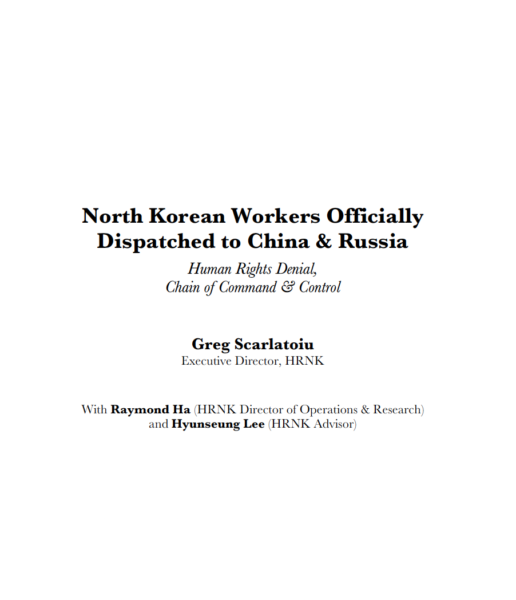
North Korea’s forced labor enterprise and its state sponsorship of human trafficking certainly continued until the onset of the COVID pandemic. HRNK has endeavored to determine if North Korean entities responsible for exporting workers to China and Russia continued their activities under COVID as well.
George Hutchinson's The Suryong, the Soldier, and Information in the KPA is the second of three building blocks of a multi-year HRNK project to examine North Korea's information environment. Hutchinson's thoroughly researched and sourced report addresses the circulation of information within the Korean People's Army (KPA). Understanding how KPA soldiers receive their information is needed to prepare information campaigns while taking into account all possible contingenc
This report is part of a comprehensive long-term project undertaken by HRNK to use satellite imagery and former prisoner interviews to shed light on human suffering in North Korea by monitoring activity at political prison facilities throughout the nation. This is the second HRNK satellite imagery report detailing activity observed during 2015 to 2021 at a prison facility commonly identified by former prisoners and researchers as “Kwan-li-so No. 14 Kaech’ŏn” (39.646810, 126.117058) and
This report is part of a comprehensive long-term project undertaken by HRNK to use satellite imagery and former prisoner interviews to shed light on human suffering in North Korea by monitoring activity at civil and political prison facilities throughout the nation. This study details activity observed during 1968–1977 and 2002–2021 at a prison facility commonly identified by former prisoners and researchers as "Kyo-hwa-so No. 3, T'osŏng-ni" and endeavors to e
This report is part of a comprehensive long-term project undertaken by HRNK to use satellite imagery and former detainee interviews to shed light on human suffering in the Democratic People’s Republic of Korea (DPRK, more commonly known as North Korea) by monitoring activity at political prison facilities throughout the nation. This report provides an abbreviated update to our previous reports on a long-term political prison commonly identified by former prisoners and researchers as Kwan-li-so
Through satellite imagery analysis and witness testimony, HRNK has identified a previously unknown potential kyo-hwa-so long-term prison-labor facility at Sŏnhwa-dong (선화동) P’ihyŏn-gun, P’yŏngan-bukto, North Korea. While this facility appears to be operational and well maintained, further imagery analysis and witness testimony collection will be necessary in order to irrefutably confirm that Sŏnhwa-dong is a kyo-hwa-so.
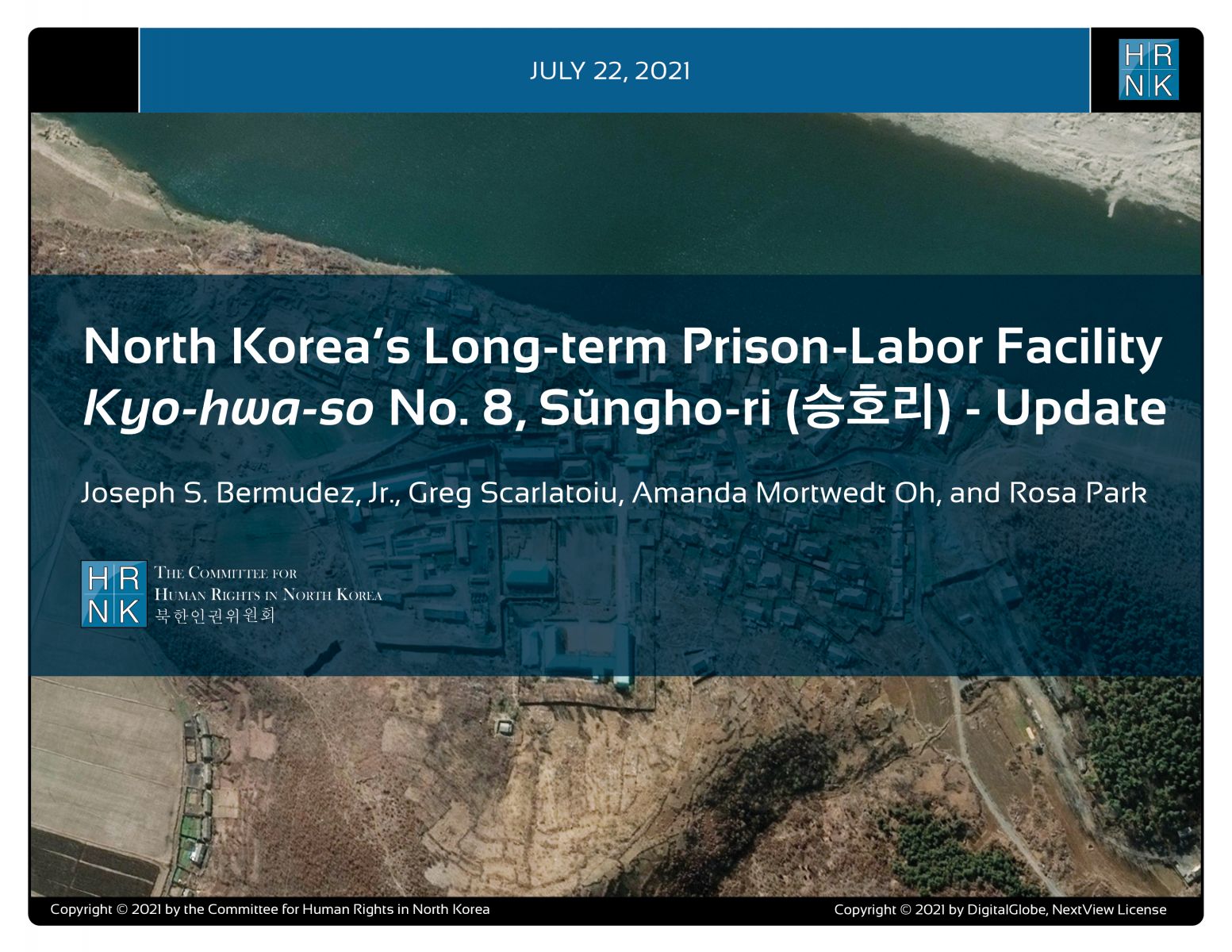
"North Korea’s Long-term Prison-Labor Facility Kyo-hwa-so No. 8, Sŭngho-ri (승호리) - Update" is the latest report under a long-term project employing satellite imagery analysis and former political prisoner testimony to shed light on human suffering in North Korea's prison camps.
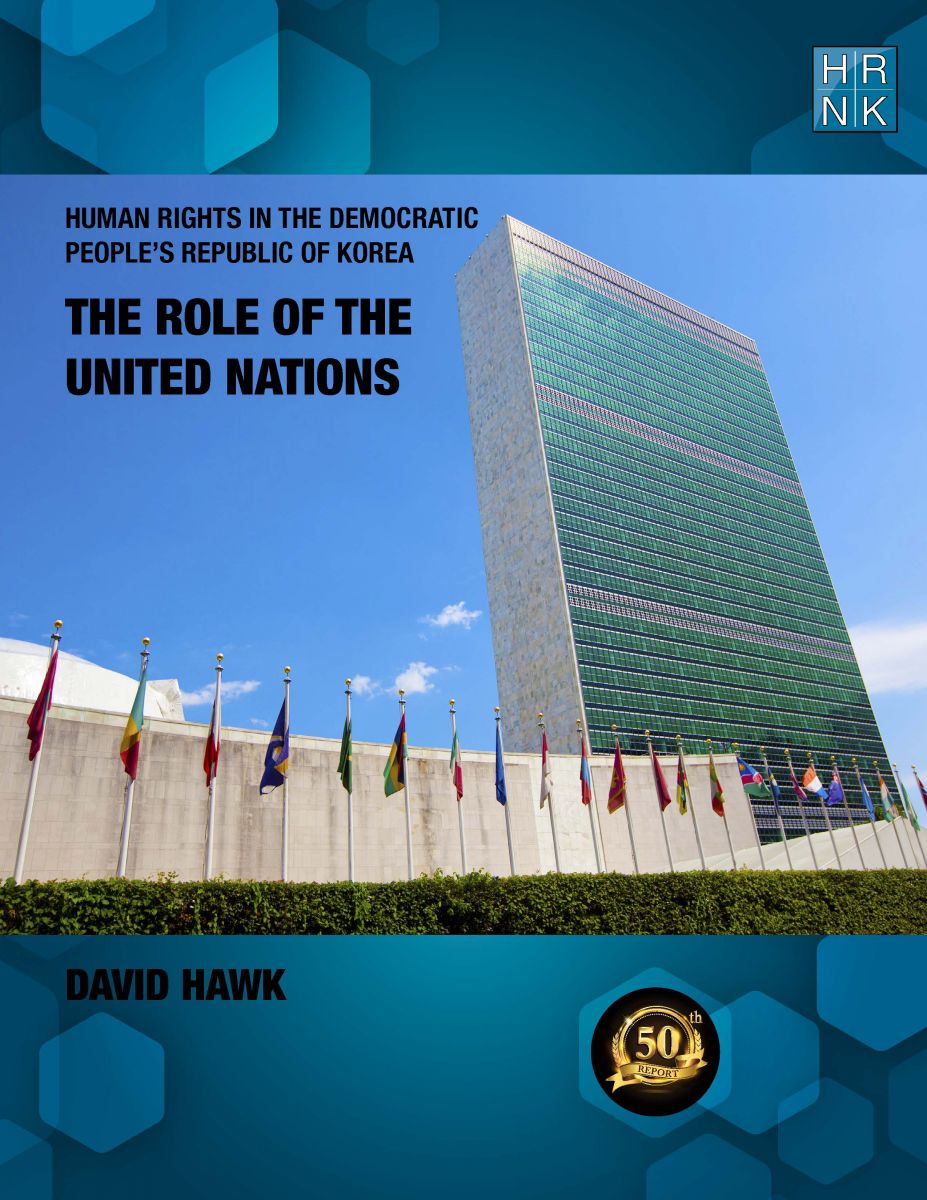
Human Rights in the Democratic Republic of Korea: The Role of the United Nations" is HRNK's 50th report in our 20-year history. This is even more meaningful as David Hawk's "Hidden Gulag" (2003) was the first report published by HRNK. In his latest report, Hawk details efforts by many UN member states and by the UN’s committees, projects and procedures to promote and protect human rights in the DPRK. The report highlights North Korea’s shifts in its approach
South Africa’s Apartheid and North Korea’s Songbun: Parallels in Crimes against Humanity by Robert Collins underlines similarities between two systematically, deliberately, and thoroughly discriminatory repressive systems. This project began with expert testimony Collins submitted as part of a joint investigation and documentation project scrutinizing human rights violations committed at North Korea’s short-term detention facilities, conducted by the Committee for Human Rights

